When you have hardwood floors, there’s nothing worse than seeing scratches. And hearing a yelp when your dog gets a toe caught in the carpet? That’s agony – for both of you. Keeping your dog’s nails trimmed is crucial to everyone. But clippers – which work fine for cats – aren’t always ideal for dogs. You CAN go to the groomers – every month. Or you can learn to use dog nail grinders. The handy tools work well, with a little training. And they save your dog from potential injury.
Dog Nails
They may not LOOK anything like our fingernails, but dog nails are built from the same keratin. Keratin is a sturdy protein designed to take the abuse of walking over different surfaces.
Our nails grow from a nailbed. In dogs? Their nails – or, rather, claws – grow from the tips of the final bones in their toes. If your pup sports clear nails, you’ll see a pink quick, which is the blood supply from the bone that allows the continued growth of the nail. The quick also contains nerve endings, which prompts that yelp of pain if you cut too close with clippers.
Depending on your dog’s breed, you’ll see different numbers of nails:
- Most Dogs: 16 toes and 2 front dewclaws (18 nails total)
- Occasional Dogs: 16 toes, 2 front dewclaws, and 2 rear dewclaws (20 nails total)
- Rare Dogs: 16 toes, 2 front dewclaws, and 4 rear dewclaws (22 nails total)
Why Trimming’s Important
Left alone, dog nails will grow, and grow, and GROW. The quick stretches out as the nails extend, allowing them to reach Guinness Book of Records proportions. Performing regular nail trims is the only thing that keeps things under control.
If your dog goes for walks on rough surfaces (sidewalks, rocky trails, hardwood floors), their nails will naturally wear down – to some extent. But if they only run around on SOFT surfaces – such as the carpet and grass – there’s no friction. So nothing pushes against the nail to keep it blunt.
Without regular nail trims, your dog can start to change the way they walk. Long nails HURT. They get caught in blankets and carpet pile. If your dog pulls too hard, the nail can break, resulting in a bloody mess that’s often frightening. And you’ll absolutely see scratches on your floors. Dog nail grinders prevent ALL of those problems.
How Dog Nail Grinders Work
If you’ve worked with power tools, dog nail grinders probably look familiar. They’re dremels or electric nail filers. A round head of grit provides the friction that slowly strips away layers of keratin from your dog’s nail. You can find corded or cordless versions, and many come with a safety guard that prevents you from going too deep and hitting that sensitive quick.
Plenty of veterinary offices and grooming salons use dog nail grinders. They also keep standard clippers on-hand. You usually have the option of choosing which you’d prefer they use. Because they know nail grinders aren’t perfect and won’t work for every dog.
So before you rush to pick one up, consider the pros and cons of switching from clippers to nail grinders.
Pros of Dog Nail Grinders
Nail clippers can leave rough or jagged edges behind. The design of the clipper means you cut off a large chunk of nail. Dog nail grinders prevent those edges. You slowly smooth the edges down, leaving a rounded edge. It’s one of the biggest pros owners love.
Dog nail grinders are also an ideal choice for giant breed dogs. Their nails are ENORMOUS. Finding clippers that FIT gets tricky. It often leads to struggles to get a clean cut. The dremel doesn’t have that problem.
Because you slowly wear down layers a little at a time, you CAN get shorter nails with nail grinders. This means you don’t have to tackle nail-trimming as often as you do with clippers. For some dogs (not to mention plenty of owners), that’s a big win.
Cons of Dog Nail Grinders
You’re operating an electrical device, and it’s LOUD. Even the quietest dog nail grinders out there can’t compete with clippers. They also produce vibrations as a result of the friction. Put the two together, and plenty of dogs say, “NO!” (Our girl doesn’t like noise OR vibration near her, so we’ll be sticking to clippers)
You’re often tied to an electrical outlet. Even cordless versions require SOME kind of charging station. And since you have to work nail by nail (which takes TIME), you may end up going back and forth to that outlet. Clippers? They only need muscle.
Dog nail grinders pose a health hazard – to YOU. Never mind that you really should invest in goggles (and possibly a mask) to avoid the nail dust, you’re risking a repetitive motion injury. The constant vibration of the grinder isn’t healthy for your wrist. Veterinary Technicians and groomers end up with this problem every year – from wielding dog nail grinders. It’s a complication you don’t get with clippers.
Choosing a Dog Nail Grinder
Can you, in theory, pick up any dremel from the hardware store and start polishing your dog’s nails? In theory. Is that SAFE? Not in the slightest. Dog nail grinders come with specific guards, controls, and noise settings designed to keep your canine from fleeing for the border. As such, you want to be thorough in your shopping and make sure you’re keeping your dog’s well-being in mind.
- Price: A higher price point doesn’t always mean you’re getting the best dog nail grinder. You really want to look at EVERYTHING before you make your choice.
- Noise: No matter what the box claims, there’s no such thing as a quiet dog nail grinder. However, some ARE quieter than others. Check the decibel levels and aim for anything under 50 (the average sound of a conversation).
- Power: Higher ISN’T better. If you have a small dog, you could end up going straight through the nail. Your best bet is to look for multiple power settings. Then you can adjust things as you work.
- Safety Guard: When the dust starts flying, it’s difficult to see. A guard will save you from going into that sensitive quick and causing pain and bleeding.
- Convenience: Eventually, you’ll need to change the head on the dog nail grinder. Is that an easy process or difficult?
- Comfort: Dog nail grinders AREN’T fast. You need to be kind to yourself. Don’t go for something heavy on your wrist or a grinder that’s difficult to maneuver.
Training Your Dog With a Dog Nail Grinder
If you’ve only used clippers in the past, a dog nail grinder will be new and potentially frightening for your pup. To prevent a panic, take things slow. With positive reinforcement, you CAN train them to accept that dremel. Keep plenty of training treats close by, and make sure you’re patient (you may only get one toe done a day).
- Place the dog nail grinder beside your dog for them to investigate. Every time they sniff it or approach it, they get a treat.
- Next, you have to turn it on so they can hear it. Again, a positive investigation gets a treat.
- When you’re ready to start the first trim, check your dog’s feet. Long hair MUST get trimmed. If hair gets pulled into that spinning head, it’ll rip out. (And your dog will never come near the grinder again)
- Choose your designated trimming spot and consider finding someone to help you hold your dog.
- Run the dog nail grinder for a few seconds. You’re reminding your pup it’s NOT scary.
- Start on the first nail, working from the bottom, up over the tip. Go slow and watch your dog – offer plenty of praise.
- You’re going to grind one layer at a time, which takes time. Check your work to make sure you’re not going too deep.
- When you’re satisfied with the length, use a circular motion around the tip to polish it smooth.
- If your dog’s doing well, you can move on to the next nail. If NOT, give them treats and wait for another day to move on.
Best Dog Nail Grinders
With practice, plenty of dogs adapt to and tolerate dog nail grinders. And owners love them. You get a smooth, polished nail that prevents scratches on hardwood floors. And, of course, you’re keeping your dog’s feet healthy. As you get comfortable with the process, you avoid expensive trips to the groomer, and the grinder expands the time you need between trimmings. It’s a pretty sweet deal. But make sure you take care of yourself. If you notice tingling or numbness in your fingers or hands, get to a doctor. YOUR health is important, too!
Andis is a well-recognized name in dog nail grinders. And it’s easy to understand why. They offer a tool that’s not heavy and comes with an ergonomic grip (which is important for YOU). Two speeds give you complete control during the trimming process, and you also get two different sanding drums to choose from in the kit (with replacements when the originals wear out).
Downsides? This particular dog nail grinder doesn’t come with a safety guard. Guards aren’t strictly necessary, but they help prevent accidents. Also, it IS corded, so you’ll need to work close to an outlet. And the sandpaper wheels CAN come loose during operation, so keep an eye on things.
The Good
- Two control speeds
- Lightweight with ergonomic grip
- Kit includes multiple sanding drum sizes
The Bad
- No safety guard
- Corded
- Sandpaper wheels come loose
If portability works better for you (and keeping nail dust OUTSIDE), then you can consider Casfuy. With an ordinary USB charger, you can easily recharge this dog nail grinder in just three hours. Two different control settings allow you to switch between high and low, and you have three different ports in the safety guard. It doesn’t weigh much, and there’s an ergonomic design that lets you get your wrist into comfortable positions. Instead of sanding wheels, you get a diamond-bit grinding stone, and the vibration sound comes in under that 50-decibel level.
The downside? If you have a larger dog with thick nails, prepare to settle in. Even the higher setting isn’t strong enough to make your job easy.
The Good
- Two control speeds
- Lightweight with ergonomic design
- 3 ports in safety guard
- Diamond bit grinding stone
- Under 50 decibels
The Bad
- Not strong enough for large dog nails
If you work in grooming, you probably recognize the ConairPro name. Their dog nail grinder focuses on providing the best trim around. This means including four grinding sandpaper bands and two finishing stones in the kit. (Your dog will have the smoothest nails around!) You also get a safety guard to help you protect against going into the quick (and help collect some of the dust).
So what are the downsides? As you can guess from the image, this is a corded dog nail grinder. It’s up to you on whether that’s a deal-breaker or not. But a real problem is you only get one speed. A single setting doesn’t work for every dog – even if you change out the bands. And not everyone felt the speed worked well.
The Good
- Safety guard
- Kit includes 4 sandpaper bands and 2 finishing stones
The Bad
- Single control setting
- Corded
- May not be strong enough for large dog nails
If you’re handy around the house, you know the Dremel name. And the 7300-PT is one of the top dog nail grinders on the market. Every kit comes complete with a battery charger and five sandpaper discs. It only takes three hours for the battery to charge, and it slides into place with a click. You can switch between two speed controls, depending on your dog’s nail needs, with an easy flick of a switch. You also get a one-year warranty (always helpful with tools).
Downsides? You need a fair amount of instinct with this dog nail grinder – or the instruction manual. Otherwise, you might struggle with changing the discs. And since there’s no safety guard, you need to take your time with the trimming process. Which you’ll want to do anyway as the higher speed (up to 13,000RPM) can cause the nail to heat up. The increased speed also makes it louder than other options. And while the Dremel itself isn’t heavy, the battery pack IS. It makes for some awkward maneuvering until you get yourself sorted, AND it puts pressure on your wrist.
The Good
- Two control settings
- Kit includes 5 sandpaper discs and wall charging unit
- One-year warranty
The Bad
- No safety guard
- Not easy for beginners to use
- Heats up nails
- Loud
- Heavy
You like the Dremel brand, but you really want a safety guard. No problem: the PawControl 7760 has you covered. You also benefit from FOUR control settings to move through, allowing better adjustment with the trimming process. And without the heavy battery pack (and a more ergonomic design), your wrists will thank you. It’s still portable (and rechargeable in around three hours), so you’re not tied to an electrical outlet. And you get four different sanding discs to choose from. Plus, this time, you get a TWO-year warranty (it doesn’t get better than that).
The downsides? As you might guess, you’re going to need to pay a little more for this option. And with speeds up to 25,000 RPM, you still need to worry about the nail heating – and the noise level. Oddly enough, while the safety guard is designed to protect your dog, many people felt it interfered with getting a clean trim. You’ll have to make that call for yourself (just don’t go too far).
The Good
- Four control settings
- Safety guard
- Ergonomic design
- Kit includes 4 sandpaper discs and wall charging unit
- Two-year warranty
The Bad
- Expensive
- Heats up nails
- Loud
- Guard may interfere with trim
That’s right – the same FURminator you trust to brush your dog has a dog nail grinder. If you’re nervous about switching away from clippers, they add an extra feature to their safety guard: an LED light. This improves your visibility. You also get two sizes of guard, letting you move between different nails. It’s portable, running on four AA batteries that will last you up to 100 hours (not too shabby). And you still get two control settings.
So what are the downsides? Naturally, you have to supply those batteries. And while it’s handy not to worry about tracking down an outlet, battery power isn’t the strongest out there. This means it isn’t likely to work as well as other dog nail grinders. However, it IS loud (which is kind of strange, given how weak it’s reported to be). But if you want an affordable choice, it’s a contender.
The Good
- Two control settings
- Two sizes of safety guard
- Includes an LED light for increased visibility
The Bad
- Batteries not included
- Loud
- Low power
Fussing with sandpaper bands can get tricky – plus, you need to buy replacements. Hertzko skips that option with their diamond bit stone. You’ll never have to change it! Meanwhile, you get a safety guard with three different sized openings to let you work with any size dog. (If you want, you CAN remove the guard, but you’ll need to step up your monitoring of the quick) Everything charges with an ordinary micro USB cord you can plug in anywhere. And they come in on the low spectrum for both noise AND vibration, letting your dog enjoy the nail-trimming process.
Downsides? You only have one speed with this dog nail grinder – and it’s not the strongest (which is why it’s quiet). The charge also doesn’t hold very long. But if you have a small dog, it’s not a bad option.
The Good
- 3 ports in safety guard
- Diamond bit grinding stone
- Quiet with low vibrations
The Bad
- Single speed control
- Low power
- Doesn't hold charge well
Oster is a name groomers recognize – they supply many popular dog grooming clippers. And their dog nail grinder is another popular addition to their label. With four AA batteries, you get two control settings. The safety guard does the double-duty of catching the nail dust for you, and it adjusts depending on the size of your dog’s nails. The kit includes a coarse stone, a fine sandpaper band, and two replacement coarse sandpaper bands – all of which are easy to swap out.
The downsides? You got it – you have to supply the batteries. And this is another dog nail grinder that’s on the loud side. Plus, while the adjustable safety guard is nice, the hole you’re NOT using allows the nail dust to fall out (not what you want). And the holes come up short for big dogs. You CAN remove it, though (just be careful).
The Good
- Two control settings
- Safety guard with adjustable sizing
- Kit includes coarse stone and 3 sandpaper bands
- Bands easy to change
The Bad
- Batteries not included
- Loud
- Safety guard not intended for large dogs
- Nail dust escapes from safety guard holes
Maybe you’re not quite ready to give up the clippers. Pet Republique has the perfect solution. Their kit comes with clippers AND a dog nail grinder! It lets you start with an ordinary trim, then move on to smoothing and polishing. You’ll get a chance to transition your dog from one to the other slowly. The grinder has two control speeds and three size openings in the safety guard. It charges with a micro USB. Best of all, Pet Republique donates 15% of its profits to the American Animal Rescue Society!
So what are the downsides? This isn’t the most powerful dog nail grinder out there. However, if you’re using the clippers first, they make a nice finishing tool. They’re also not very quiet. And while you’re getting a stone rather than sandpaper, it still wears out, so you’ll have to purchase replacements.
The Good
- Two control settings
- 3 ports in safety guard
The Bad
- Loud
- Low power
- Stone wears out
When it comes to dog nail grinders, you want a tool that will work until you’ve finished all of your dog’s feet. Petural lasts up to SIX hours between charges. Probably because they have a diamond bit stone doing the work. The lightweight design is easy on your hands, making it easy to switch between the two control speeds. You also get that critical safety guard with three different size options. And coming in with a decibel level under 50, it’s quiet AND low in the vibration levels.
Downsides? With a maximum output of 9,000RPM, many people felt this dog nail grinder wasn’t powerful enough. It’s up to you whether you want to trade power for noise and vibration, though. Unhappily, the micro USB charge DOES often cause problems. And since you want all of those six hours to work, that can be a sticking point.
The Good
- Two control settings
- 3 ports on safety guard
- Lightweight
- Diamond bit grinding stone
- Under 50 decibels
The Bad
- Low power
- Problems with charging
URPOWER combines options that are friendly for your dog AND you. The lightweight and ergonomic design takes things easy on your hands and wrist. You also only need two hours with the micro USB to get a full charge, and then you have three hours to work. Your dog gets less vibration than other tools. They also enjoy a safety guard with three different-sized holes to choose from. And with a diamond bit grinding stone, you won’t have to fuss with changing a lot of sandpaper.
The downsides? At 60 decibels, you’re getting loud again. And there’s only one setting, so you can’t quiet things down. You’ll want to weigh all of the options before you make a decision.
The Good
- 3 ports on safety guard
- Lightweight with ergonomic design
- Diamond bit grinding stone
- Low vibrations
The Bad
- Single setting
- Loud
Trimmed Tootsies
Nail trims are important parts of your dog’s grooming routine. You protect them from problems with their paws, as well as preventing potential damage to your floors. And if you want the smoothest nail trims, there’s nothing like dog nail grinders. Once you – and your dog – get the hang of things, you’ll never switch back to clippers. But make sure you take care to mind the quick – and baby your hands!
But when you have the knack, you’re dog’s toes will look fantastic!

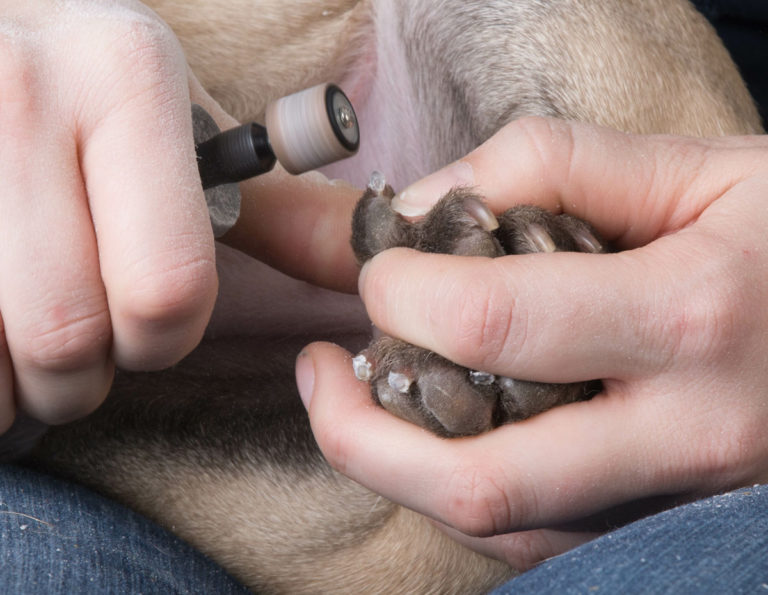
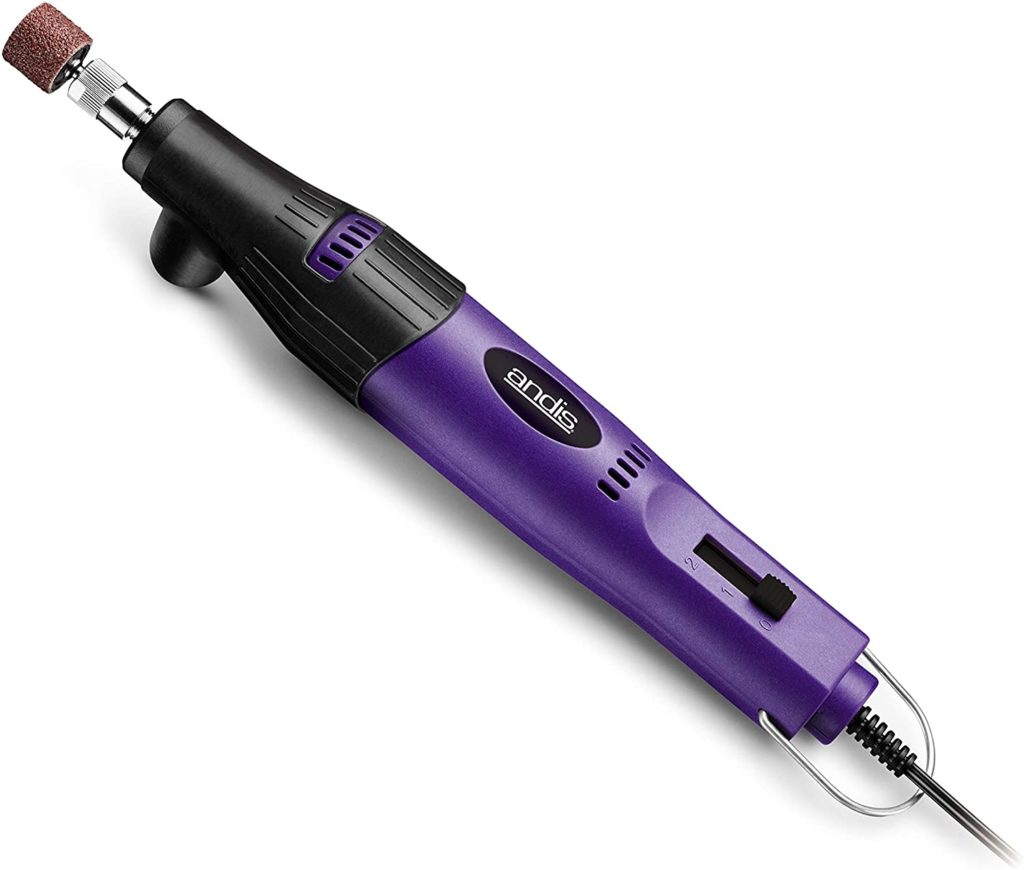
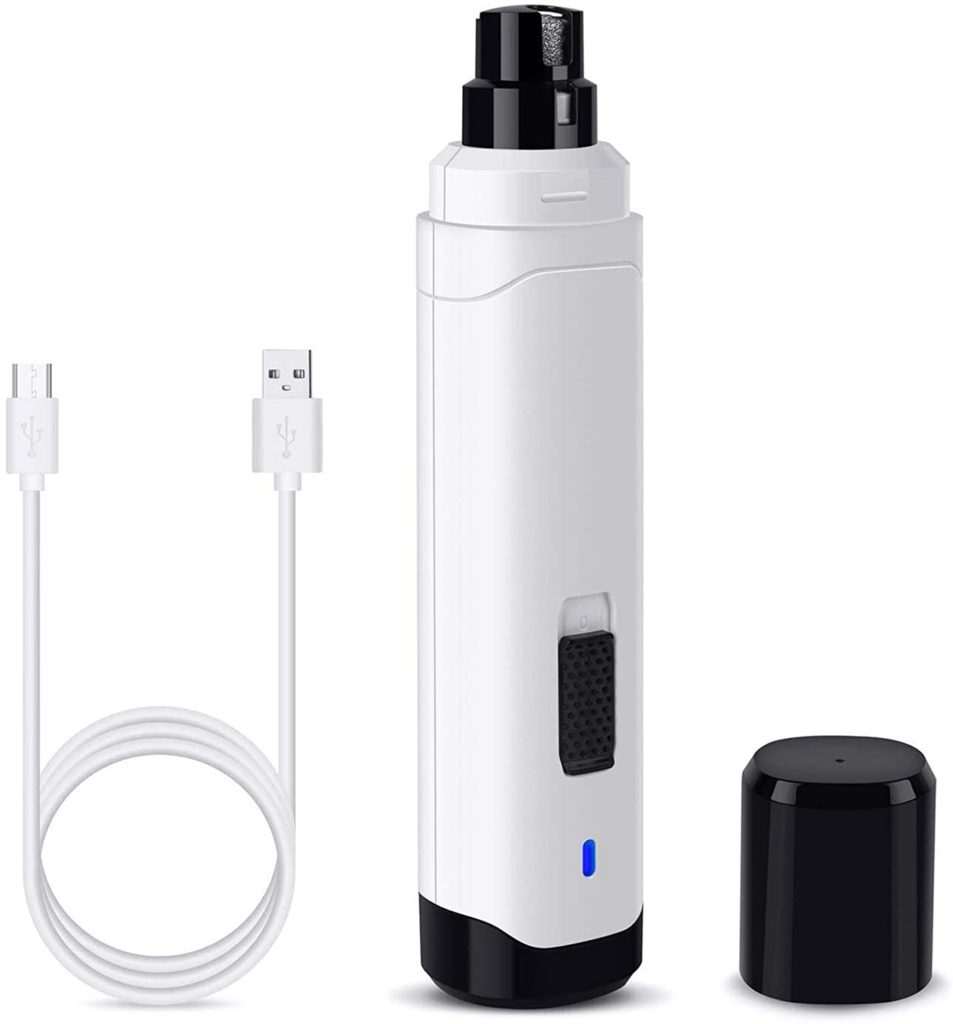

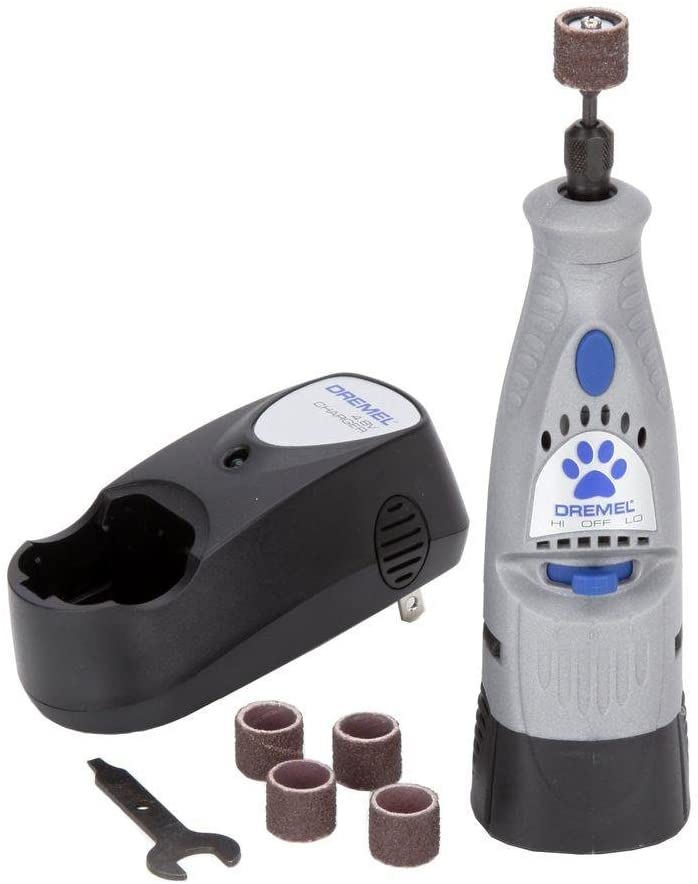
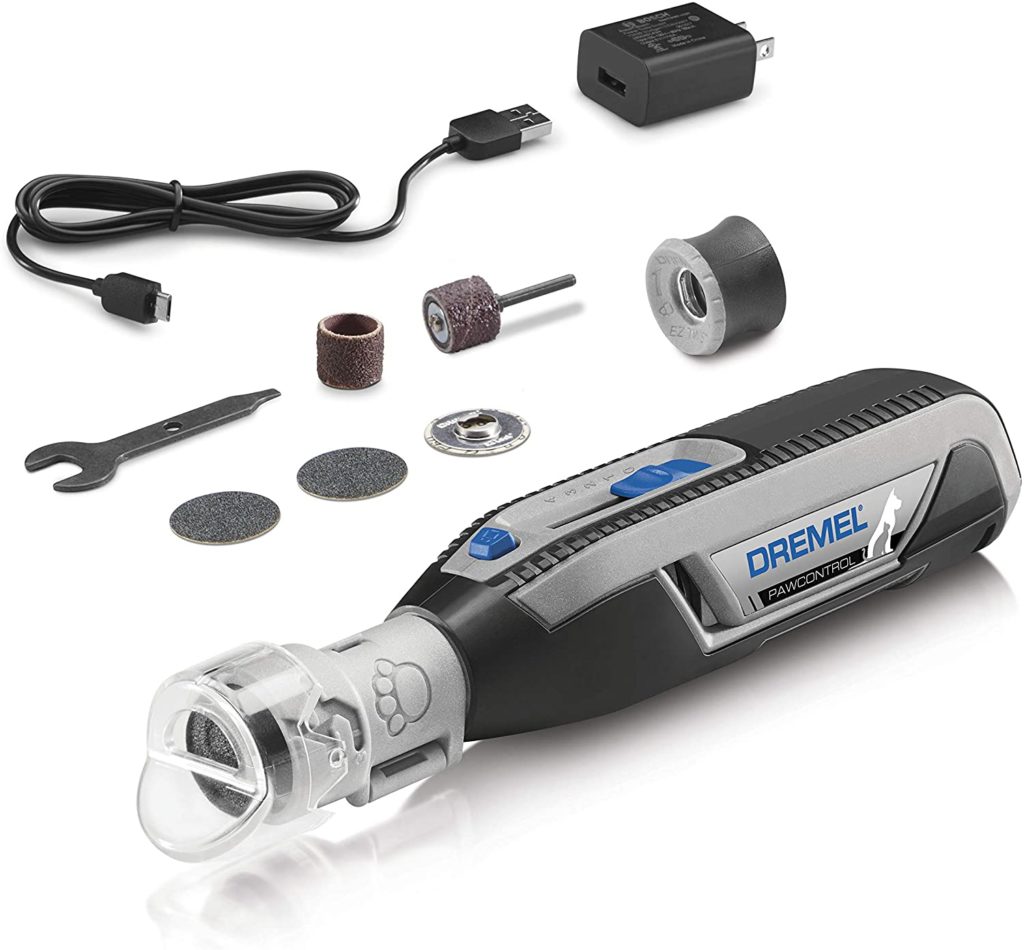

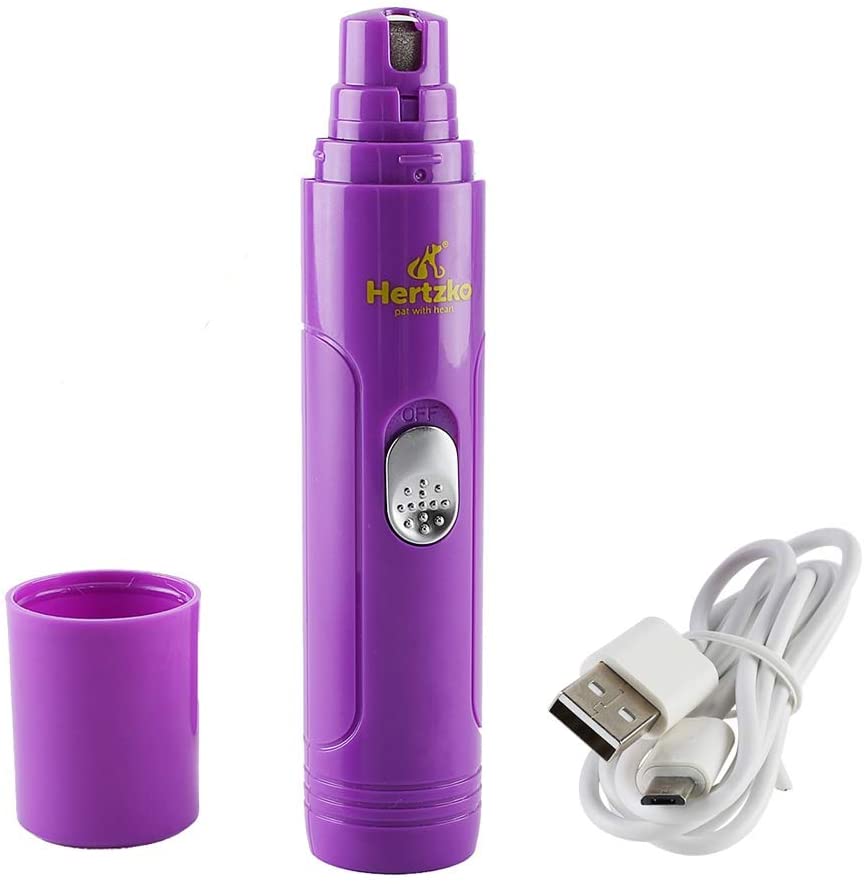
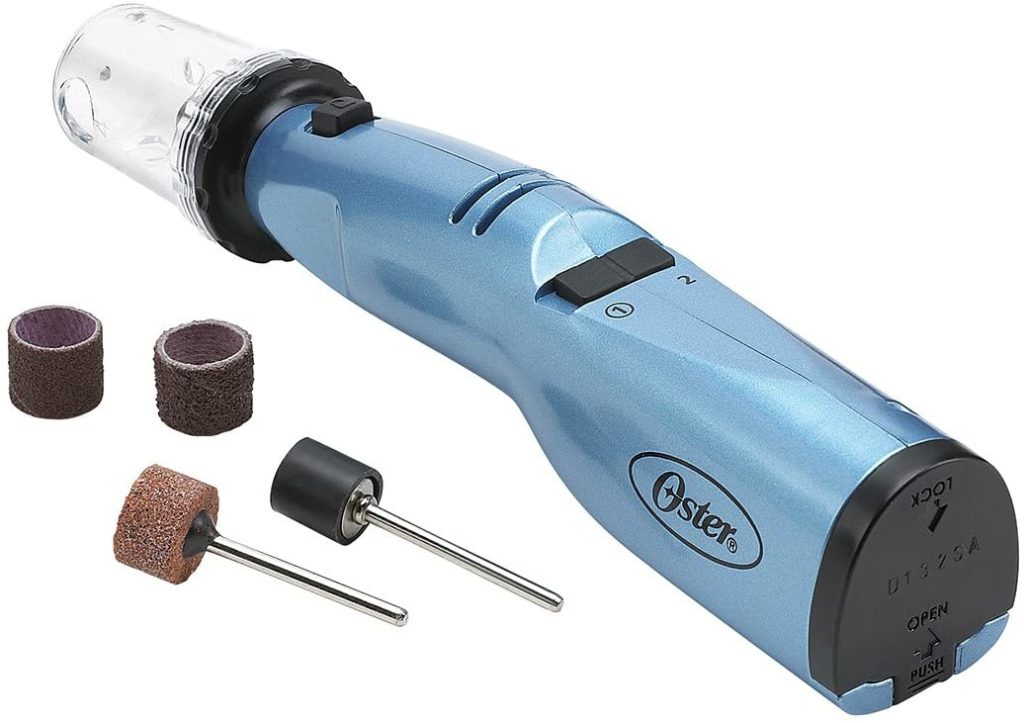
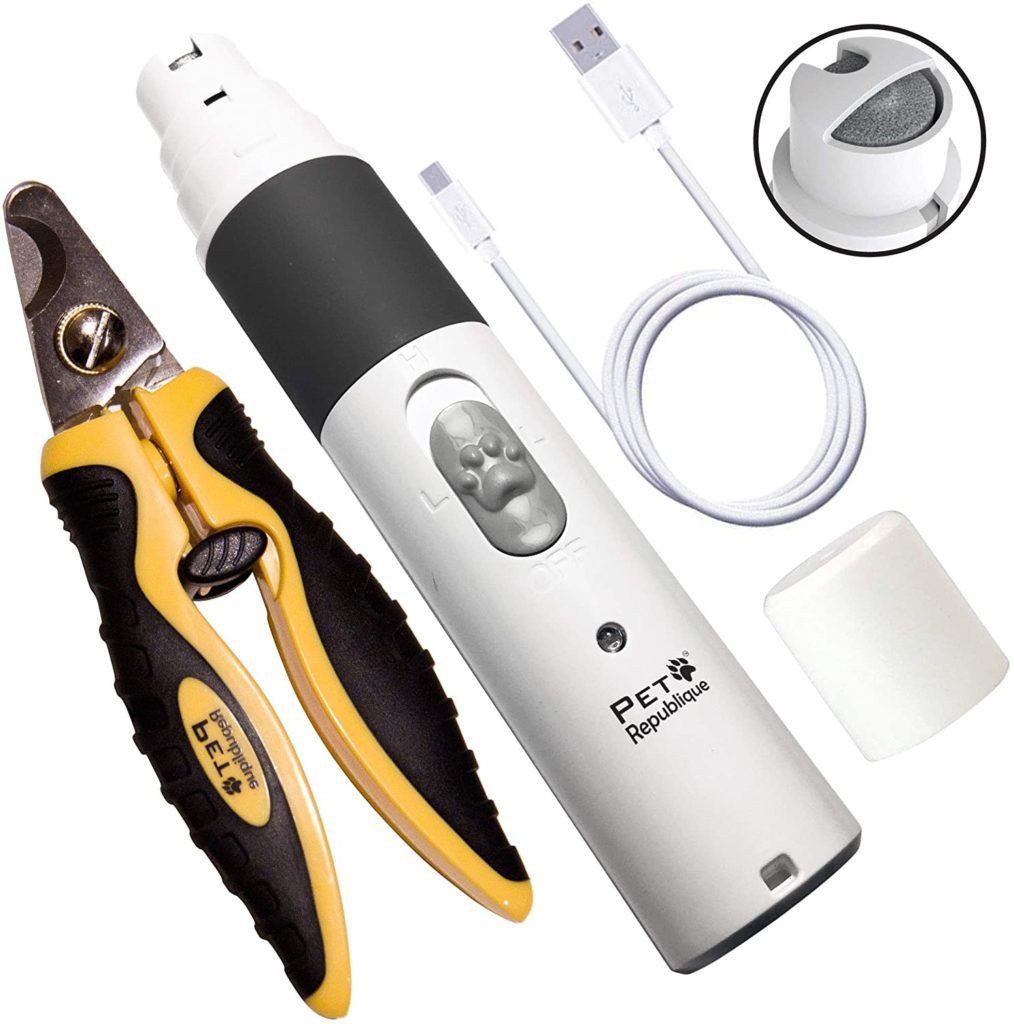
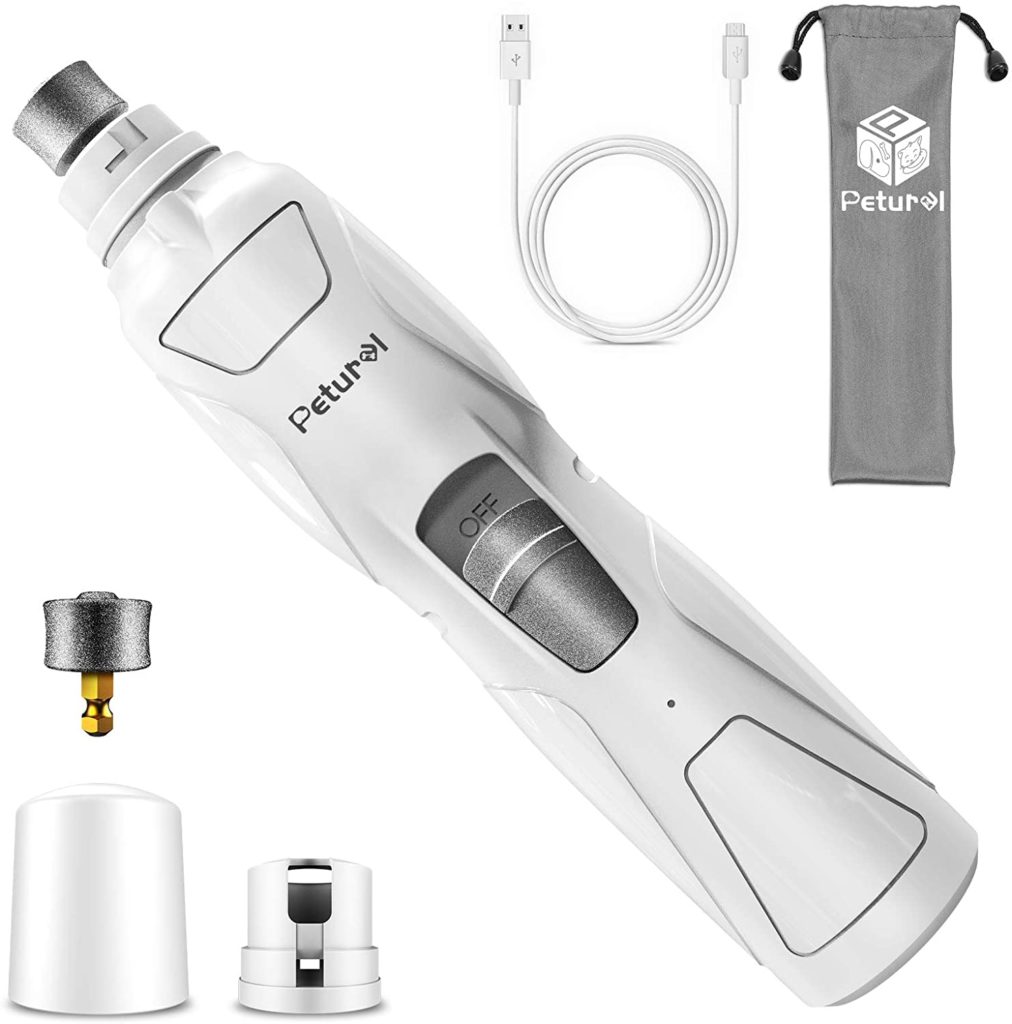
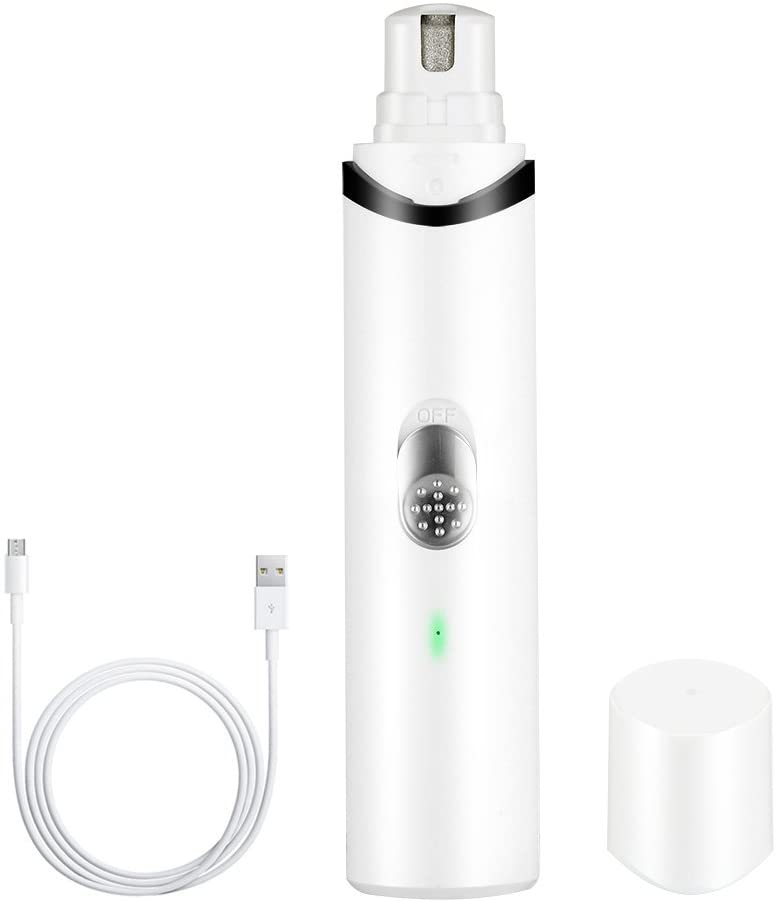




No comment yet, add your voice below!